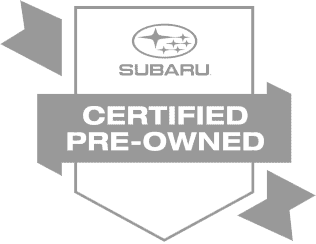
Keeping any car running smoothly comes down to how well you take care of it. And, like most things in life, you'll see best results with regular maintenance. If you own a Subaru, one of the most important tools in this process is Subaru's multipoint inspection. Whether you're a new Subaru owner or an experienced driver, it's important to understand what this is, what's included in a Subaru multipoint inspection, and why it matters for Montana drivers.
What Is a Multipoint Inspection?
A multipoint inspection is a comprehensive vehicle check. Think of it as taking your car to the doctor for a health check-up. Trained technicians will check the condition of your car's key systems and components to make sure everything is working. If not, it's a great way to catch these issues before they become a problem.
For Subaru vehicles, this inspection is especially detailed: Dealers typically follow a 152-point checklist for certified preowned (CPO) cars to ensure the interior, exterior, engine, and undercarriage is fit for purpose. Subaru has high standards for peace of mind. Oil changes and tire changes are important, but they're just a small part of the bigger picture.
What's Included in a Multipoint Inspection?
The Subaru multipoint inspection covers the car's major systems.
Exterior and Interior Checks
The inspection starts when you check your car in for a service. Subaru technicians will inspect the inside and outside of your car, including headlamps, taillights, turn signals, mirrors, wipers, door locks, and seat belts. They'll check for visible damage, signs of leaks, and warning lights on the dashboard.
Engine and Underhood Inspection
Once the initial inspection is complete, technicians will load your car onto the lift to inspect the engine and beneath the car. They'll check the radiator, hoses, clamps, air filters, and the oil, brake, coolant, transmission, and power steering fluid levels. They'll also inspect the belts and exhaust system.
Brakes and Drivetrain
The techs will then check your brakes, including the brake pads, calipers, rotors, wheel cylinders, axles, and lug nuts. They'll examine the rear differential fluid and check the tire pressure and tread depth. As Subaru's all-wheel drive shares the load between the wheels, technicians will check the front and back wheels comprehensively.
Suspension and Steering
Even if the car drives smoothly, there may be invisible issues, especially if you often drive on uneven roads. Technicians will check beneath the car to spot potential damage. They'll also check your suspension, struts, shocks, and skid plates.
Battery and Electrical Systems
The technicians will load test the heart of the Subaru to make sure your battery is in good shape. They'll run tests on the electrical equipment, including lights and signals, check the terminals for loose wiring, and scan the system for trouble codes. If you have a hybrid or plug-in hybrid, they'll also run high-voltage system checks.
Comfort and Safety Systems
Your car is only as safe as its safety technology. Technicians will check key features, such as airbags, seatbelt warning lights, reverse lockout, backup cameras, child safety locks, and security systems. Finally, technicians will check the heating and cooling systems, audio and Bluetooth connectivity, rear defogger, and clock.
Why Does a Subaru Multipoint Inspection Matter?
These inspections help maintain Subaru's renowned reliability. Regular inspections help:
- Spot worn or damaged components, such as belts, wiper blades, or filters, before they fail
- Identify neglected fluid changes that can damage the engine
- Make sure that all lights and signals are working
- Check the tire pressure and tread depth
- Check the safety systems are working
Having a regular multipoint inspection supports Subaru's maintenance guidelines. They recommend changing your oil every 3,000 to 5,000 miles to prevent unexpected breakdowns or safety risks.
How Is a Subaru Multipoint Inspection Conducted?
The inspection is conducted by certified technicians at Subaru dealers, such as ours at Great Falls Subaru. The technician and the service manager must sign off on the inspection, guaranteeing that the vehicle meets Subaru's highest quality levels before CPO certification or ongoing use. This brings accountability and ensures customers receive a transparent, trustworthy vehicle report.
What Happens After the Inspection?
This comprehensive inspection process takes approximately an hour and is often performed during routine servicing, allowing technicians to identify cosmetic issues, upcoming maintenance, or major repairs. Subaru will then provide a comprehensive report and color code your car:
- Green means everything is good.
- Yellow means you should monitor issues or get a service soon (these services will be listed).
- Red means your car needs urgent attention (issues will be flagged).
Is a Multipoint Inspection Worth It?
The answer is a resounding yes. Routine inspections save money in the long run by catching small issues before they escalate. They also extend the life of your car, maintain its resale value, and support safer driving. Dealerships, such as ours at Great Falls Subaru, even offer complimentary inspections during every service visit to highlight the importance of preventative care.
How Often Should You Get a Subaru Multipoint Inspection?
Experts recommend getting a multipoint inspection at least once a year or at every scheduled service interval outlined in your Subaru's maintenance manual. More frequent inspections may be beneficial if you drive in harsh conditions or have an old or high-mileage vehicle.
Drive With Confidence
A Subaru multipoint inspection by certified technicians will inspect every key system to ensure your Subaru is safe, reliable, and ready for the road. Visit us at Great Falls Subaru to schedule your next inspection today. For more details on Subaru maintenance and multipoint inspection services, visit Great Falls Subaru in Montana or the official Subaru website.
white sedan on road during daytime by John Michael Wilyat is licensed with Unsplash License




